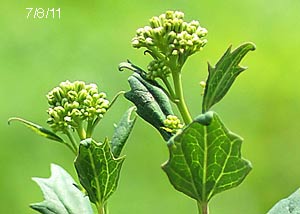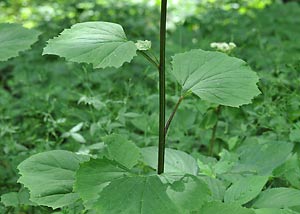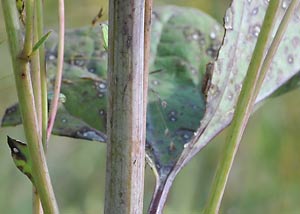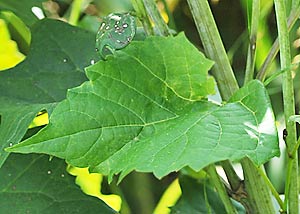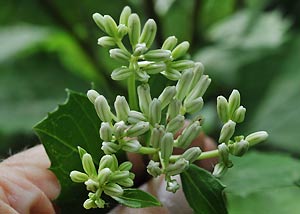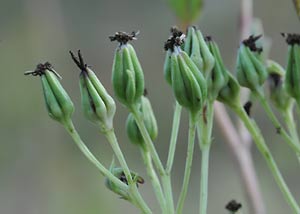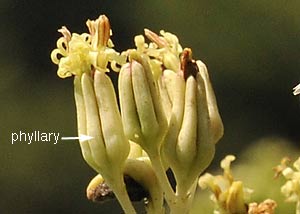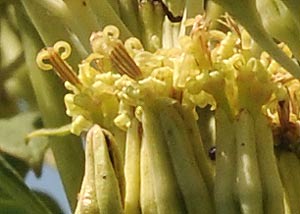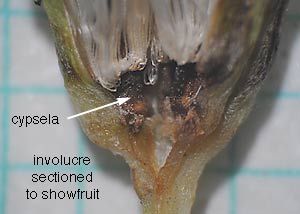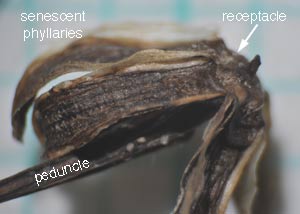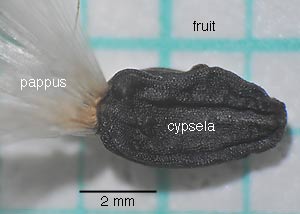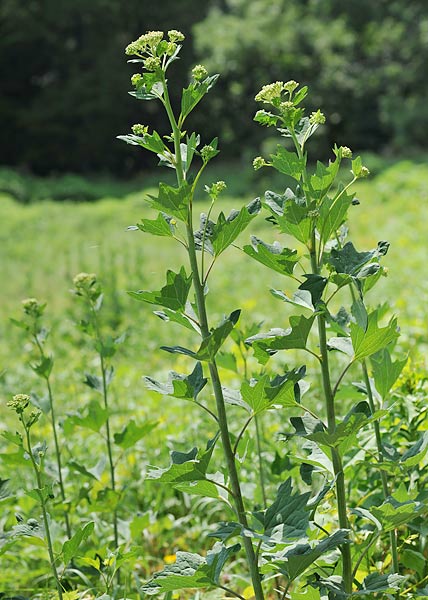
Date: August 3, 2011. Location: Rochester Cemetery (map)
| Classification Hierarchy | |
| Kingdom | Plantae |
| Subkingdom | Tracheophyta |
| Superdivision | Spermatophyta |
| Division | Magnoliophyta |
| Class | CLASS |
| Subclass | SUBCLASS |
| Order | Asterales |
| Family | Asteraceae |
| Genus | Arnoglossum |
| Species | Arnoglossum atriplicifolium |

Date: August 3, 2011. Location: Rochester Cemetery (map)
Scientific Name: Arnoglossum atriplicifolium ([GR] arnoglossum=lambs tongue, atriplicifolium means that the leaf is similar to a plant in the genus (Atriplex). A synonym that remains in common use is Cacalia atriplicifolia.
Common Name: Pale Indian Plantain
Origin: Native
Notes: Pale Indian Plantain can become very tall—up to nine feet. It is often found in sunny sandy locations and usually stands out above the crowd.
Additional references: 1, 2, 3, 4, 5, 6, 7, 8, 9, 10, 11, 12, 13, 14, 15, 16, 17, 18, 19, 20.
Flowers: July; corollas small tubular whitish (pale green or yellow); each head with 5 disc flowers and an involucre of 5 elongate phyllaries connivent at the tips and spreading in fruit; Fruit, Cypselae (achene), black when mature, topped with a pappus of many short (~ 5 mm long) bristles. Stem: smooth and glaucous
Leaves: basel leaves large (up to 10 inches wide) ovate-cordate, margins shallow lobed or dentate; cauline leaves alternate, petiolate, approximately deltate, margins coarsely dentate, upper (adaxial) blade surface a darker green than lower (abaxial) surface.
Glossaries of botanical terms: 1, 2, 3, 4, 5, 6, 7, 8, 9, 10.
